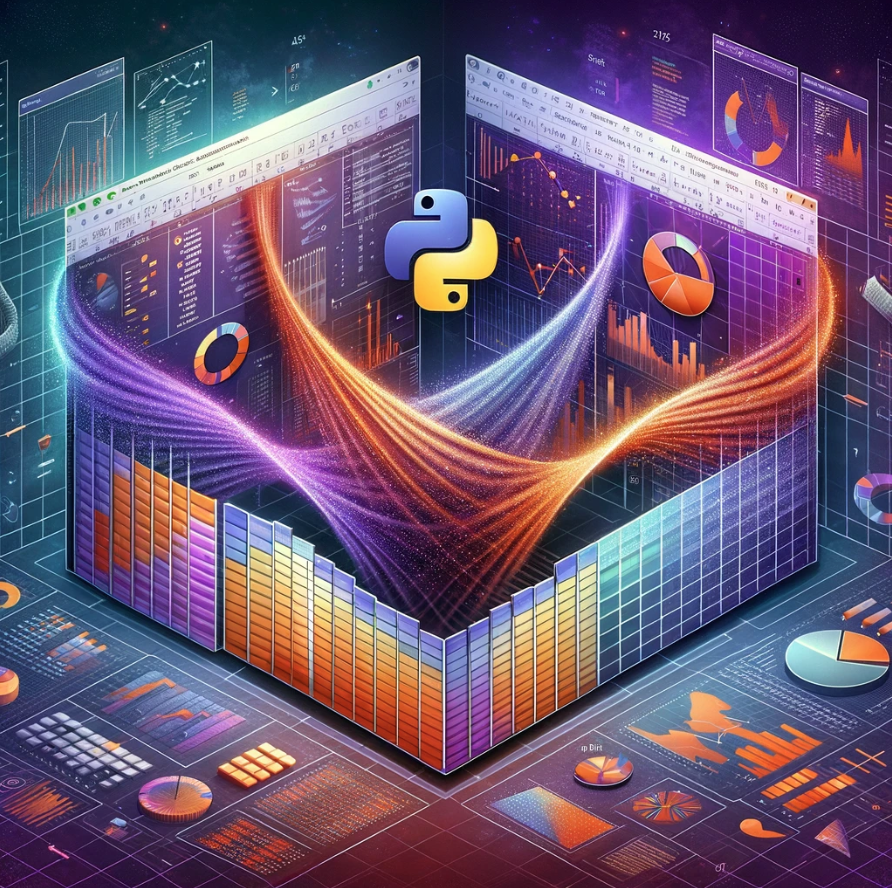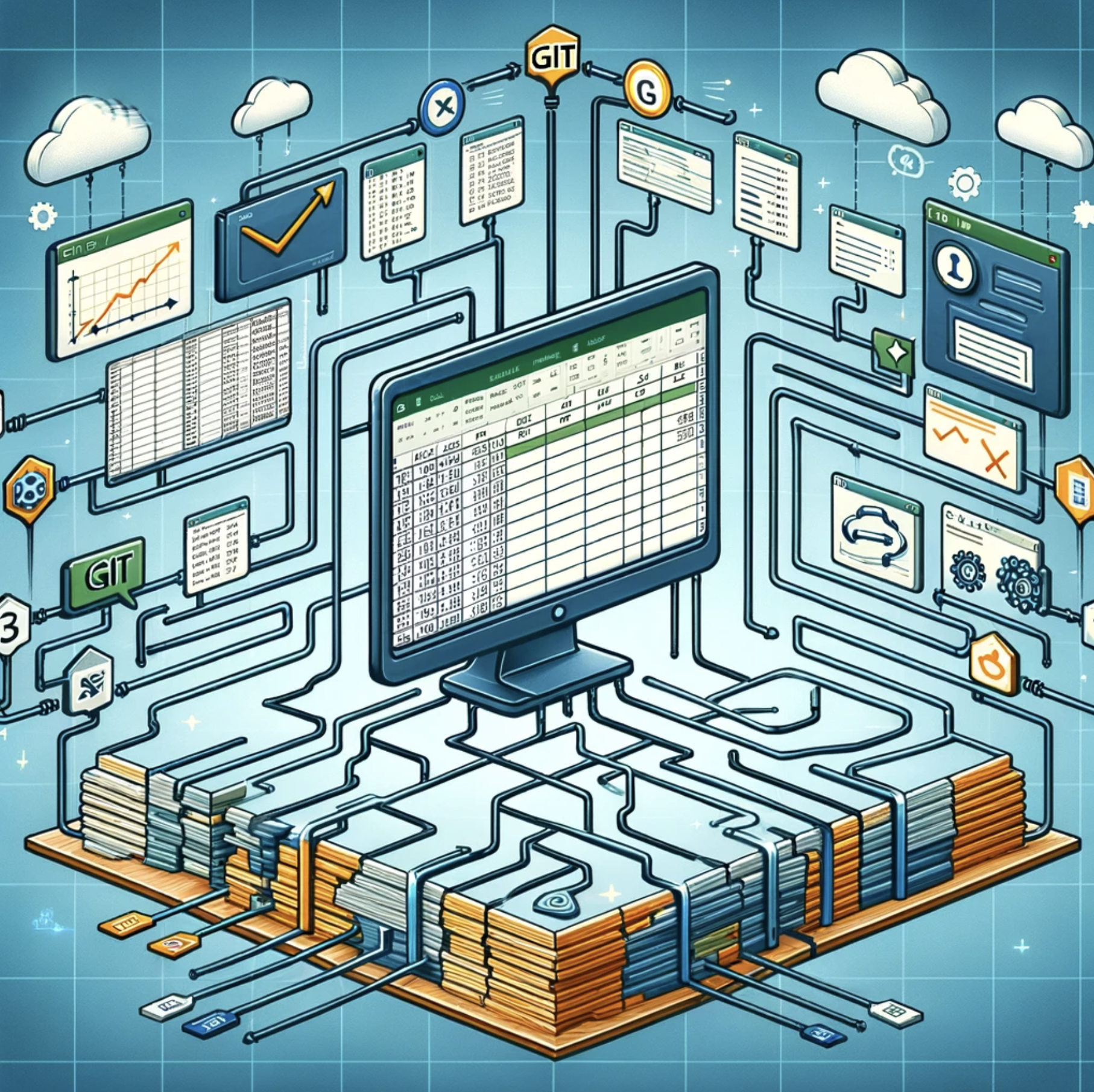Beyond the Spreadsheet: Excel as a Database with Python Integration
At first glance, Excel might not seem like the ideal candidate for database operations, especially when compared to traditional databases like SQL. However, its accessibility, ease of use, and widespread adoption make it an invaluable resource for small-scale projects and data management tasks. Excel's ability to store, organize, and manipulate data, coupled with its user-friendly interface, allows for database-like operations without the steep learning curve of more complex database systems.
Excel Meets Data Science: Advanced Analytics with Python's SciPy and Excel
The amalgamation of Python and Excel for data science endeavors offers a unique blend of simplicity and power. Python, with its extensive ecosystem of libraries, excels at performing complex statistical analyses, data manipulation, and machine learning. Excel, on the other hand, is unparalleled in data organization, visualization, and its user-friendly interface, making it a favorite among professionals across various industries.
Unlocking Big Data in Excel: Utilizing Dask and Pandas for Large Datasets
The advent of big data has revolutionized the way we analyze information, demanding more from our tools and technologies. Excel, a stalwart in data management and analysis, finds itself at a crossroads, challenged by the sheer volume and complexity of big data. Enter Dask and Pandas, two Python libraries designed to bridge this gap, offering robust solutions for handling and analyzing large datasets within Excel. This post delves into the integration of these tools with Excel, promising to unlock new realms of possibilities for big data enthusiasts.
The Visual Spreadsheet: Creating Interactive Excel Reports with Plotly and Python
Excel has long been the standard for organizing and analyzing data across industries. However, the built-in charting capabilities often fall short when tasked with representing complex datasets or conveying nuanced insights. Static charts can only go so far in engaging stakeholders and facilitating data-driven decision-making. Interactive visualizations, on the other hand, invite exploration, allowing users to uncover patterns and insights at their own pace.
Excel and REST APIs: Automating Real-Time Data Feeds with Python
At the heart of this transformation is the REST API (Representational State Transfer Application Programming Interface), a standard web protocol that enables communication between systems on the internet. REST APIs serve as conduits, allowing applications to fetch data from external sources in a structured format, typically JSON or XML. This capability is crucial for accessing live data streams—whether it's the latest stock prices, weather updates, or social media trends—and integrating them into our Excel dashboards.
Seamless Data Transformation: Streamlining ETL Processes with Excel and Python
In the realm of data analytics, the process of extracting, transforming, and loading data (ETL) forms the backbone of effective data management and analysis.
Advanced Excel Charting Techniques for Compelling Data Storytelling
Data storytelling transcends mere presentation, crafting narratives that resonate with audiences and drive strategic decision-making. At the heart of this art lies the mastery of Excel's advanced charting techniques, a skill that transforms raw numbers into compelling visual narratives.
Harnessing the Power of Excel Macros in Financial Modeling
Among Excel's most potent features for enhancing these models are macros, automated sequences that can perform tasks within Excel. This guide delves into the strategic use of Excel macros in financial modeling, offering insights into recording and writing VBA code to automate complex calculations and simulations, alongside best practices for debugging and optimizing macro performance.
Excel and Power Automate: Streamlining Your Workflow
Excel has long been the go-to tool for data analysis, financial modeling, and complex calculations. When paired with Microsoft Power Automate, its capabilities are significantly expanded, transforming static spreadsheets into dynamic engines that can interact with other applications, trigger actions based on data events, and automate tasks that traditionally require manual input.
Navigating Excel's Forecasting Tools - A Predictive Pathway for Businesses
At the heart of Excel's utility for businesses is its suite of forecasting functions, designed to predict future trends based on historical data. Notably, functions such as FORECAST.LINEAR and FORECAST.ETS stand at the forefront, enabling users to project future values in linear or seasonal trends, respectively. These tools are particularly adept at handling time-series data, where predictions are based on time as the primary variable.
Harnessing Excel and Python for Real-Time Data Analysis and Reporting
In the era of digital transformation, the need for dynamic data analysis and reporting cannot be overstated. Organizations and individuals alike strive to make informed decisions based on the latest information. This urgency has propelled the integration of two powerful tools in the realm of data science: Excel and Python.
Excel Meets Machine Learning: Predictive Modeling in Spreadsheets
The fusion of Excel and machine learning represents a groundbreaking advancement in the realm of data analysis and decision-making. For decades, Excel has been the go-to tool for crunching numbers, organizing data, and performing complex calculations.
Custom Excel Functions with Python: Extending Spreadsheet Capabilities
Microsoft Excel has been the cornerstone of data analysis, financial modeling, and many other business processes for decades. Its comprehensive set of built-in functions and formulas covers a wide range of needs, from simple arithmetic calculations to complex statistical analyses.
Automating Financial Scenarios with Excel and Python
In the fast-paced world of finance, the ability to swiftly analyze various financial scenarios can be the difference between outperforming the market and missing a critical opportunity.
Efficient Data Cleaning Techniques in Excel and Python
Clean data is the cornerstone of accurate analysis in any data-driven decision-making process. In the realms of business intelligence, data science, and statistical analysis, the quality of the insights derived is directly proportional to the cleanliness of the data.
Next-Level Spreadsheet Management: Excel and Git Integration
Enter Git, a powerful version control system designed to track changes in files and coordinate work among multiple people. While originally developed for code, Git's capabilities offer a compelling solution for managing Excel projects.
Building an Interactive Excel Dashboard with JavaScript
In today's data-driven landscape, the demand for interactive and dynamic dashboards has surged, transforming the way data is analyzed and reported. Traditional static reports no longer suffice as businesses and individuals alike seek more engaging, insightful, and customizable ways to view their data. Enter the power of JavaScript within Excel, an innovation that leverages the Excel JavaScript API to usher in a new era of dashboard functionalities.
Leveraging R with Excel for Statistical Computing
R, a language designed for statistical computing and graphics, has become an indispensable tool in data science for its extensive capabilities in statistical analysis, data manipulation, and visualization. While Excel is widely used for data storage, manipulation, and preliminary analysis, its statistical and graphical capabilities are limited compared to R.
Automating Data Validation in Excel with Python
However, as datasets grow in size and complexity, maintaining the accuracy and consistency of data within Excel spreadsheets becomes a daunting task. Manual data validation processes are not only time-consuming but also prone to human error, compromising the reliability of your data. Enter Python
The Future of Excel: AI-Enhanced Spreadsheets
Excel has come a long way. Today, we stand on the brink of a new era with the integration of Artificial Intelligence (AI) into Excel, marking a significant leap in its capabilities. These AI advancements are set to transform spreadsheet management, making Excel not just a tool for data storage and analysis, but a smart assistant capable of intuitive interactions and predictive insights.




















